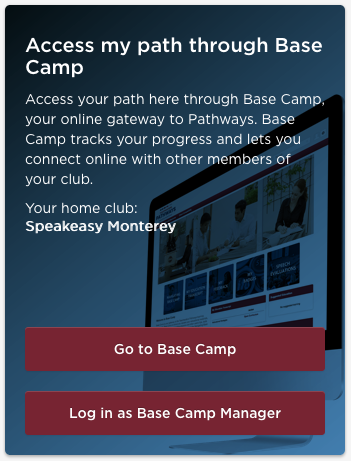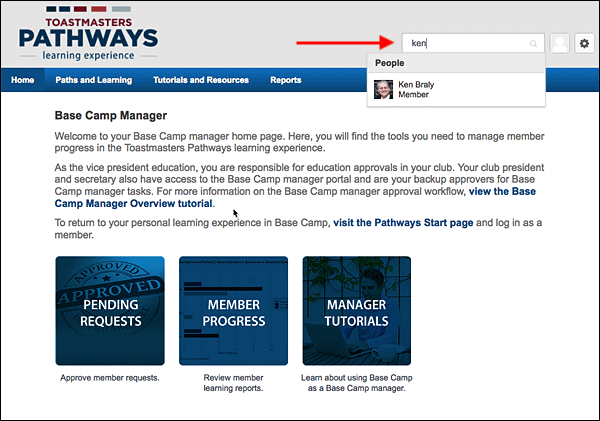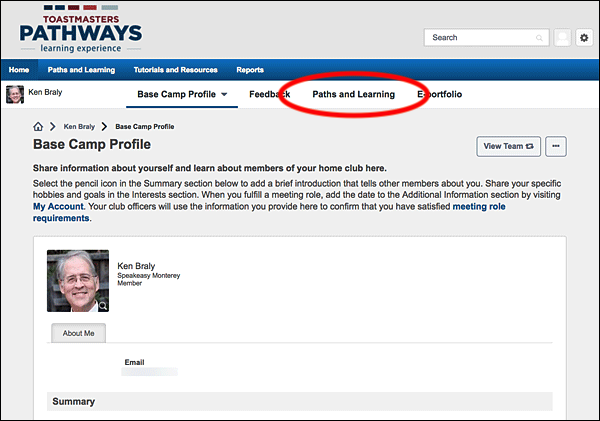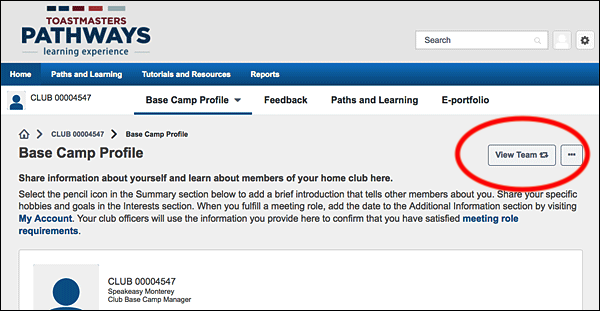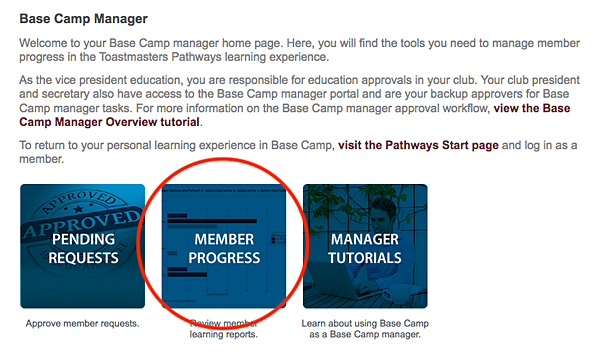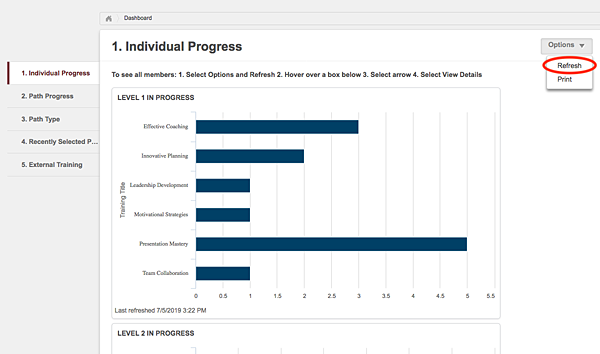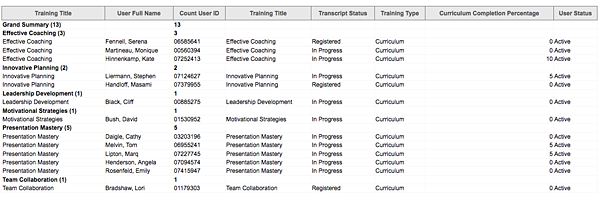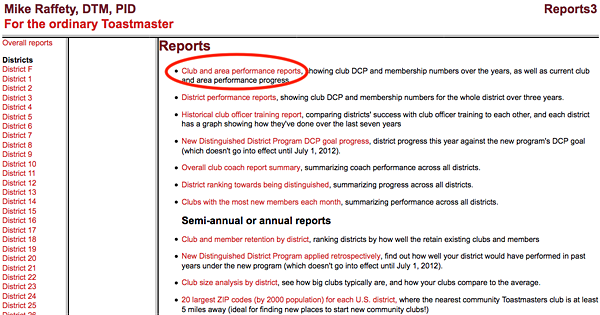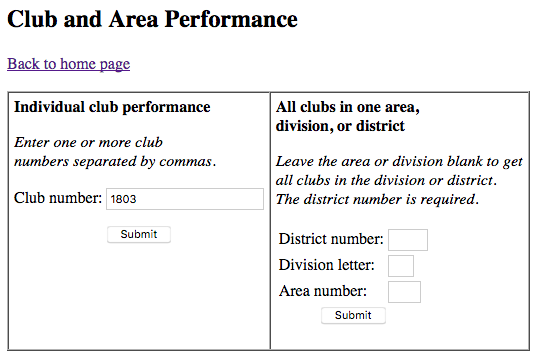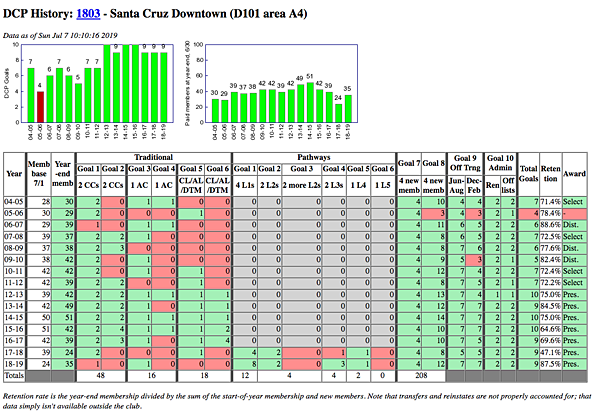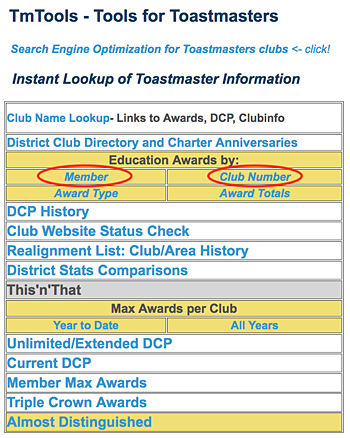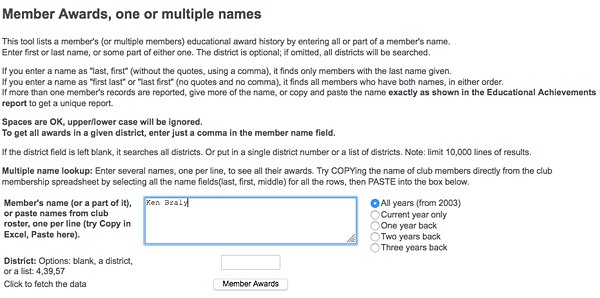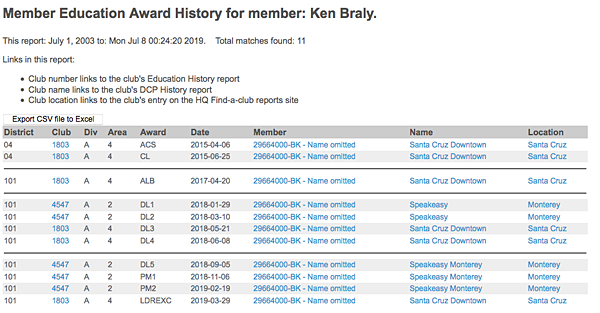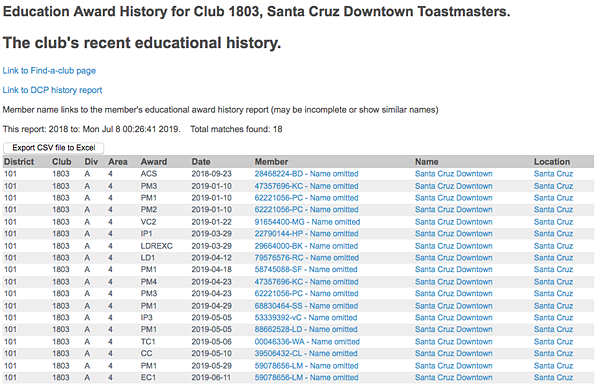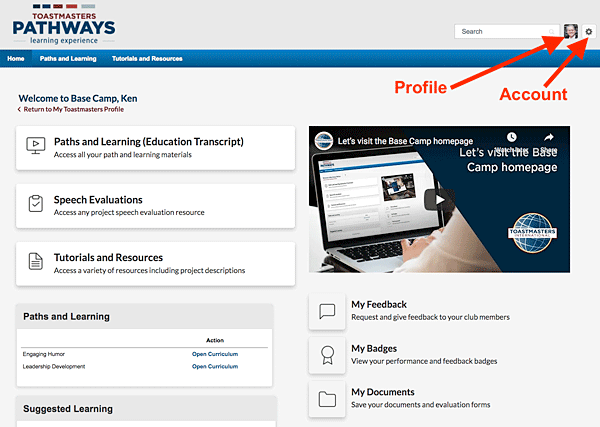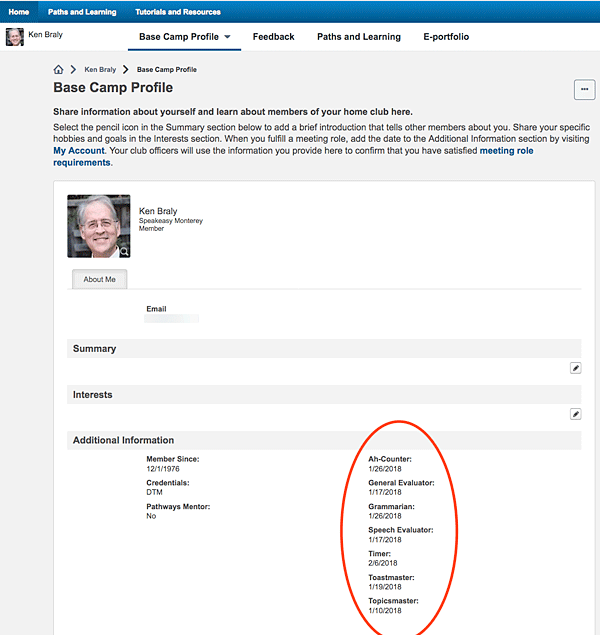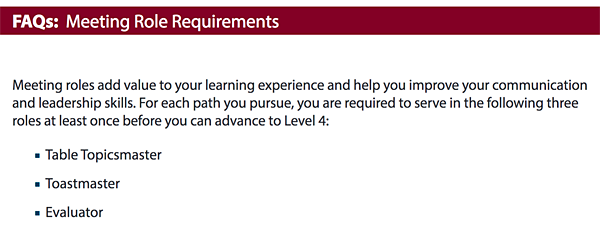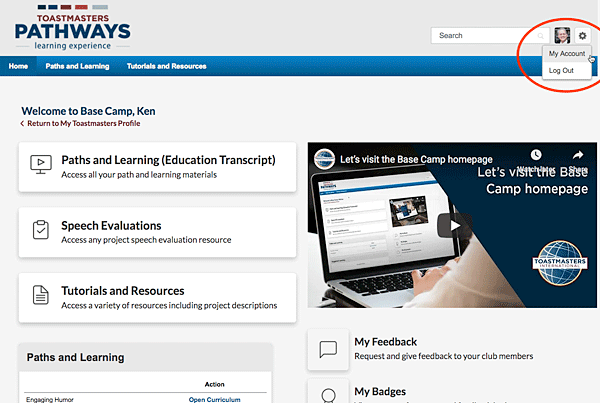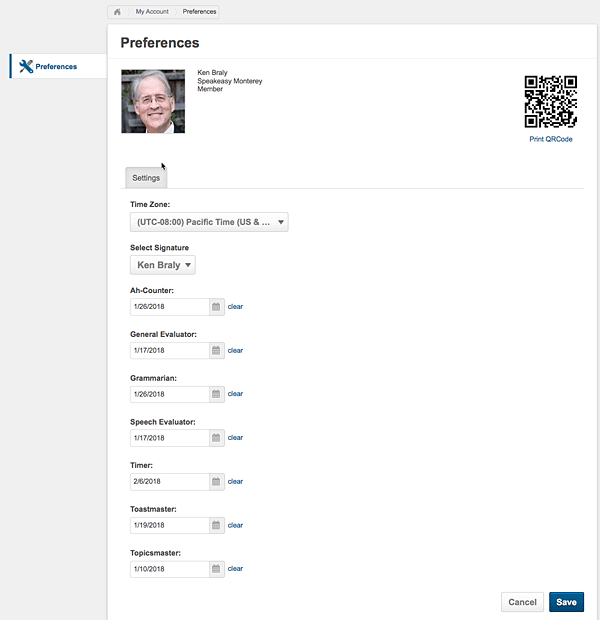Pathways Base Camp Manager Resources
District 101 Pathways Guide
Ken Braly, DTM, DL5, PM5
Be sure to check out this page for tips for working with Pathways as a regular member, not as a Base Camp Manager.
Below, if you click many of the images, a full-size version will be opened in a separate window or tab.
- Basecamp Managers Training Video
- The Home Club
- Approving a Member’s Completion of a Level
- Viewing a Member’s Progress
- Selecting Members from a List
- Viewing the Club’s Progress
- Tools from Raffety and Marshall
- Profile and Account
- Tracking Member Progress
Basecamp Managers Training Video
District 101 held a special training session for Basecamp Managers on Zoom. It was recorded, and you can watch the recording here.
The recording covers most of the items described on this page, and more. You are encouraged to watch it.
The Home Club
If you belong to only one club, when you log into Pathways the main screen has a block that looks like
If you belong to multiple clubs, that block looks like
Clicking on the tab, you can see a popup which lets you select your home club.
And if you change your home club, you are asked to confirm.
The home club setting of a member is important for Base Camp Managers. You will be able to see the Pathways record of a member only if that member has set their home club to your club. If they have set their home club to a different club, the club roster in Club Central will show that they are enrolled in Pathways, but their Pathways progress will be invisible to you.
This becomes a particular issue when the member has completed all the projects in a level and sends you a request to approve the level completion so they can move on to the next level. If they have done some of the projects in another club, you need to be able to confirm that they have actually completed those projects.
Approving a Member’s Completion of a Level
When a member completes all the projects in one of the levels in a path, a message will be sent to you, the Base Camp Manager, to approve the completion.
To see what’s involved in level completion from both the member and the Base Camp Manager point of view, see this page. Also, watch this video, which describes not only the Pathways approval, but also giving the member (and your club) credit in the Toastmasters website.
Note that although a member can work on projects in any level in any sequence, Pathways level completion can occur only in level order. This means, for example, that if a member has not completed all the projects in Level 1 and Level 2 of their path, they cannot be given credit for completing Level 3 — even if they’ve done all the Level 3 projects — until they have finished Level 1 and Level 2.
Viewing a Member’s Progress
To see what a member has accomplished in Pathways, enter their name in the search box after you have logged in as Base Camp Manager. Their name should appear in the drop-down, and you can select them:
When their record appears, click “Paths and Learning” to see their full Pathways curriculum, just as you would view your own.
Note: if the member belongs to multiple clubs and has their home club set to a different club, you will not be able to see their record.
Selecting Members from a List
To select a member from a list of club members, enter “club” in the search box on any Pathways screen. The club number will appear in the drop-down, and you can select it:
When the profile appears, click “View Team” to see the list.
From the list, you can click on a member’s name to see their record.
Note: any members who belong to multiple clubs, and have their home club set to a different club, will not show up in the list.
Viewing the Club’s Progress
To get an overview of where all the members stand in their Pathways progress, click the Member Progress button on the main Base Camp Manager screen:
This will bring up five separate graphs, showing the number of members working on each path and level within that path. Be sure to click the “Refresh” drop-down in the upper right corner, then wait (and wait and wait) until all five graphs refresh with the latest data.
In the upper right of each graph, there is a dropdown. Click “View Details” to bring up more detailed information.
The result is a list of members who are working on each path, and working in that level. There is a lot of extraneous information in this list, but some of it is useful. “Registered” means they have selected this path, but they haven’t even looked at it yet.
The Curriculum Completion Percentage is the percentage of the entire path that they have completed. For Level 1, as seen here, a completion percentage of 5 means they have done the Ice Breaker, and 10 means they've done one additional Level 1 project.
This is especially helpful in Level 1, where if you know a member has given the Ice Breaker, but their completion percentage is 0, they may be stuck not knowing how to mark the Ice Breaker project as complete.
Note: if the member belongs to multiple clubs and has their home club set to a different club, they will not show up here in the graphs or lists.
Tools from Raffety and Marshall
Mike Raffety, DTM, and and George Marshall, DTM, have developed some tools that access the Toastmasters International database and display the data so that it’s useful. Most of what they produce is for district leaders, but some of it is useful for club officers as well.
Find Mike Raffety’s site here. You can use it to see the last 15 years of Distinguished Club Program performance for a club.
At the top of the page, click “Club and area performance reports.”
Enter a club number and Submit.
Here are DCP details for the club.
Find George Marshall’s site here.
You can search the educational award history for a member or for a club.
If you select Member, you can enter a member’s name and (optionally) one or more district numbers to search for them in.
If the member’s name is common (e.g., Mary Smith), the list may show awards for more than one member. Use the district number and club name(s) to make sure you’re looking at the right member.
If you select Club Number, you can enter a club number and how many years of award data you want to view.
These are the awards earned by members of the club. Even though the entries say “Name omitted,” you can usually figure out who earned the award. The two initials shown are the first letters of the last name and first name of the member.
Profile and Account
When a member signs in to Pathways, on the main screen there are two icons in the upper right — the Profile icon (photo, if one has been entered, or a silhouette), and the Account icon (a gear).
Clicking on the Profile icon brings up the member profile, which shows information about the member. They can add or change the photo, and enter some descriptive information if desired. The profile also shows when the member had certain roles.
The role information is important because Pathways requires that a member have held certain roles before proceeding from Level 3 to Level 4.
How does the member indicate when they accomplished these roles? By hovering over the Account icon, and selecting My Account from the dropdown.
On the Account screen, they can enter the dates for each role.
Note: the Base Camp Manager can’t update these dates; the member has to do it.
Tracking Member Progress
Pathways doesn’t provide really useful tools for tracking member progress on their paths. You can open an individual’s transcript and look at their levels and projects, but there isn’t a good way to look at the progress of all members in the club at once.
John Webb has created a spreadsheet he uses to keep track of which paths and projects each member of his club has completed. You can see the template here. You can download it and make whatever changes are needed for your club.

